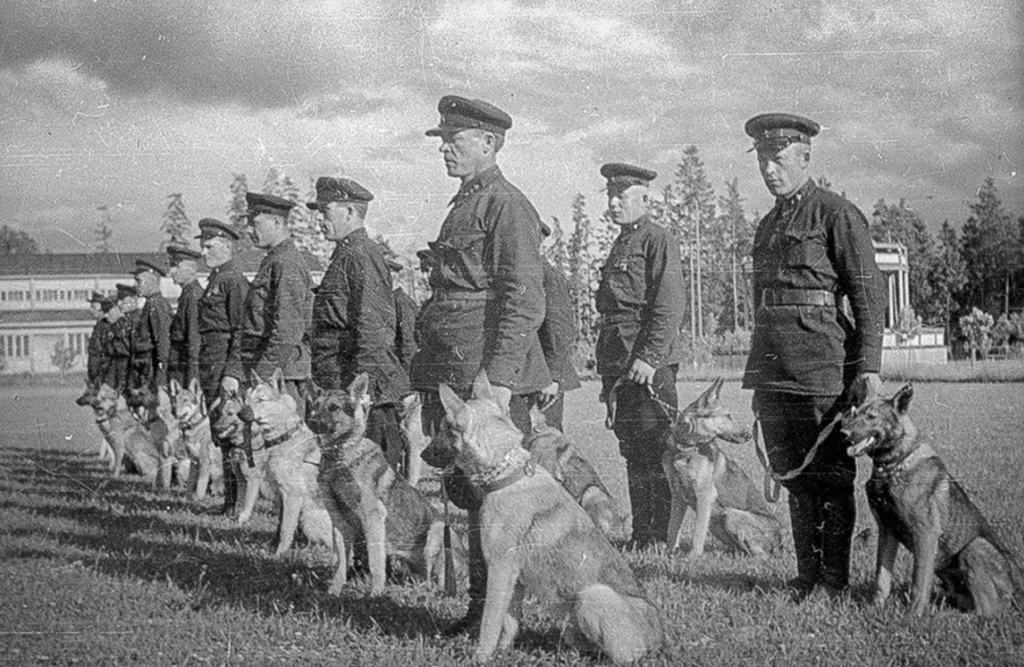World War II was a time of intense innovation, brutal combat, and often desperate strategies. Among the most unusual ideas ever put into action was the Soviet Union’s use of dogs as anti-tank weapons. While the concept may seem unbelievable, it was a real military program designed to stop invading German tanks. Known as “anti-tank dogs,” these animals were trained to run under armored vehicles with explosives strapped to their backs.
Although the plan seemed daring and creative at the time, it was deeply flawed and resulted in tragic consequences. Many of the dogs, frightened by the chaos of war, either failed to complete their mission or caused more damage to Soviet forces than to the enemy. This dark and largely forgotten chapter in military history raises important ethical questions and serves as a reminder of the costs of desperation during wartime.

How the Anti-Tank Dog Program Began
The idea to use dogs in warfare was not new. For centuries, armies had used animals for transportation, communication, and even combat. But the Soviets took it a step further during the early 1940s when German tanks were advancing deep into Soviet territory. Lacking advanced technology and overwhelmed by the speed and power of the German blitzkrieg, Soviet commanders looked for alternative ways to fight back.

In response, military scientists developed a program to train dogs to carry explosives. The training involved starving the dogs and then placing food underneath tanks so they would learn to run under the vehicles. Once deployed in real combat, the dogs would be fitted with a bomb that would explode when they crawled beneath enemy tanks. The theory was that this would destroy the tank and give Soviet soldiers a fighting chance.
Video:
Anti-Tank Dogs & Explosive Rats – Insane Animal Weapons Used In WW2!
Why the Plan Failed on the Battlefield
Although the idea might have seemed logical in theory, it quickly fell apart in practice. The training had been done using Soviet tanks, which meant that the dogs associated the smell and sound of those vehicles with food. When they were released in battle, many of them ran toward familiar Soviet tanks instead of the German ones, resulting in unintended and deadly consequences.
Even worse, the noise, gunfire, and confusion of the battlefield terrified the animals. Many ran away, panicked, or returned to their handlers with explosives still strapped to their bodies. This led to friendly fire incidents and even the destruction of some Soviet tanks and personnel.

The unreliability of the dogs, combined with the emotional distress caused to the soldiers who had worked with them, quickly led to the decline of the program. What was meant to be a creative solution turned into a dangerous liability.
The Ethical Controversy That Followed
Beyond the practical failure of the program, the use of anti-tank dogs sparked significant moral concerns. Many people questioned whether it was ethical to use animals as living weapons, particularly in such a terrifying and painful way. These were loyal creatures, trained to trust humans, only to be sent into deadly situations with no chance of survival.
Video:
The Exploding Anti-Tank Dogs of World War II
At the time, such questions were rarely addressed publicly. The Soviet Union did not openly discuss the program or its failures. It wasn’t until many years later that the full details emerged, painting a disturbing picture of wartime desperation and the consequences of treating living beings as expendable tools of war.
A Forgotten Chapter with Lasting Lessons
Although the anti-tank dog program was quietly abandoned during the war, its legacy remains a sobering one. It stands as a reminder that not every innovation in warfare leads to progress. Some ideas, no matter how well-intentioned or strategic they might seem, are doomed by poor planning and the complex nature of living beings.
The dogs involved in the program were not just statistics. They were animals who had been trained, cared for, and trusted their handlers. In many ways, they were also victims of war, used in a way that few would consider humane today.

Conclusion: When War Crosses a Line
The story of the Soviet anti-tank dogs is one of the strangest and most heartbreaking chapters in World War II history. It shows how extreme situations can lead to equally extreme decisions, often at the cost of ethics and compassion.
While the program may have faded from most history books, it deserves to be remembered not for its military significance, but for the painful lessons it offers about the limits of warfare and the treatment of animals. In a world constantly shaped by conflict and innovation, stories like this remind us that some lines should never be crossed, even in the name of victory.


